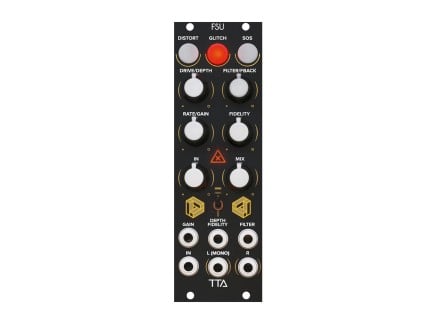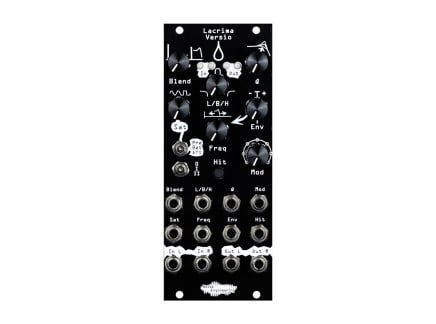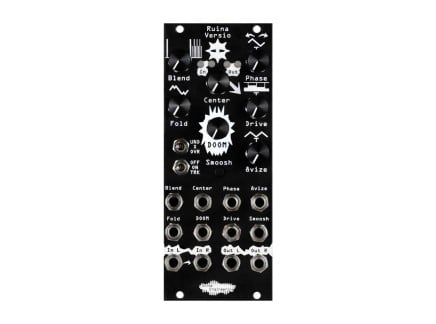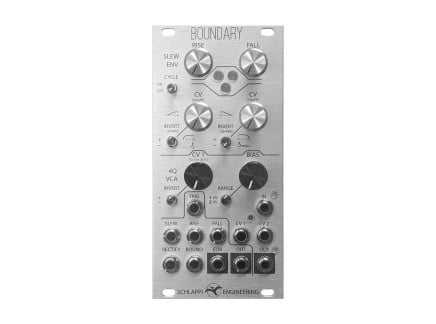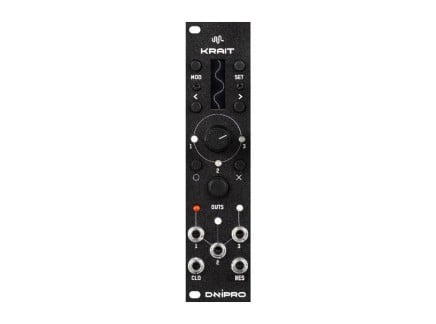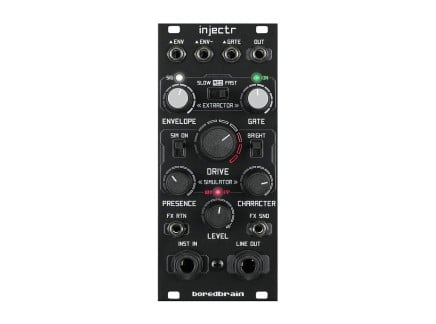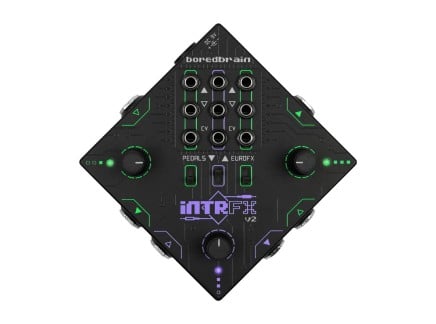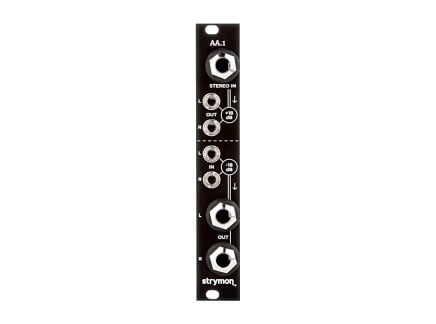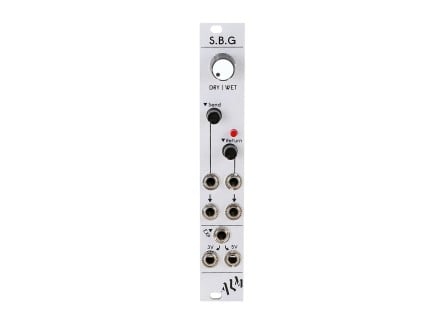It's been nearly a year and half since we began our 62hp video series, which focuses on packing an Intellijel Palette case with an assortment of Eurorack modules to achieve various musical goals. From DAW controllers and iPad companions to self-contained samplers and grooveboxes, this series has touched on a number of different approaches to prove that you don't have to own a large, sprawling modular synthesizer to make rad music.
This time around, we're building a system that's designed to accompany and process sounds from a guitarist, functioning either as a compact, standalone rig or within the greater context of a pedalboard. We chose modules that are highly versatile and provide a number of cool effects in a compact package, and supplemented them with flexible control voltage sources and external interfacing elements to deliver a dynamic and interactive playing experience. Curious to know why we picked certain modules for this video, and what kinds of things we think about when designing a system with a specific purpose? Read on to find out.
Considerations for Assembling a Guitar Effects Synthesizer
Of course, we should address the elephant in the room: why would you want to build a modular synthesizer for processing guitar, when pedals are often cheaper and can accomplish many of the same sounds? Obviously, pedals are a totally valid way to shape, sculpt, and mangle your guitar, and we're certainly not trying to dismiss that world of effects—in fact, we love them too! But while you could achieve many of the same sounds that this system can make using other methods, it's really two aspects that take things to a whole new level: the modular patching workflow and creative control voltage capabilities.
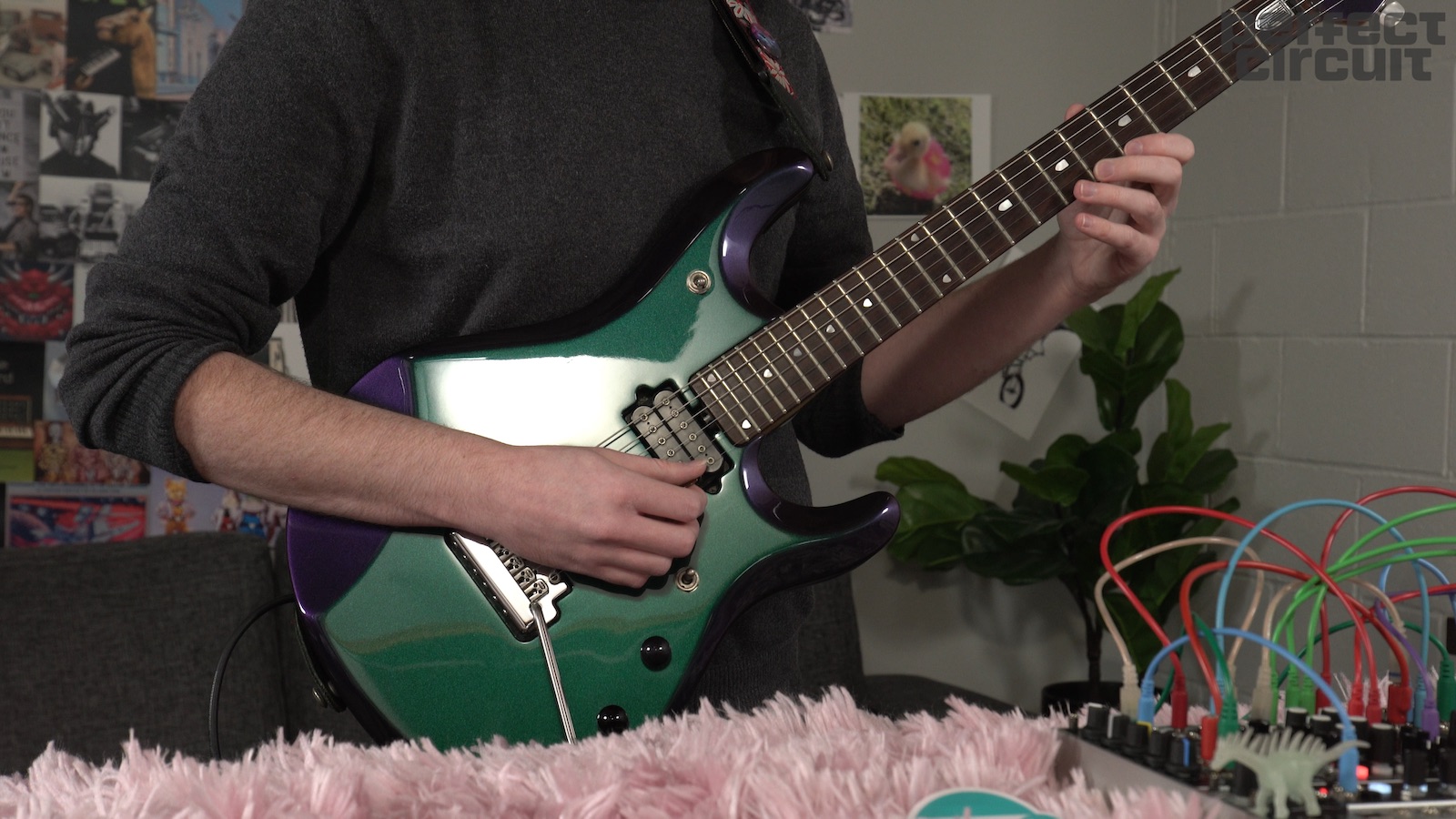
Pedalboards usually have a fixed signal chain during a performance or composition, but with a modular synth any connection can be created, broken, or changed at any given time. This inherently encourages much more experimentation in how modules are connected together, whether they confine to the conventions of traditional effects order or not. Additionally, through the use of multiples and mixers, it becomes way easier to establish parallel signal chains, something which remains fairly uncommon in the world of pedals. For example, running a compressor, phaser, and delay in sequence can be highly expressive when dialed in just right, but could also lead to a lot of overpowering textures. On the other hand, by splitting the signal into three separate paths dedicated to each effect individually and summed together with a mixer at the end, it's much more manageable to dial in clarity and nuance to your sounds.
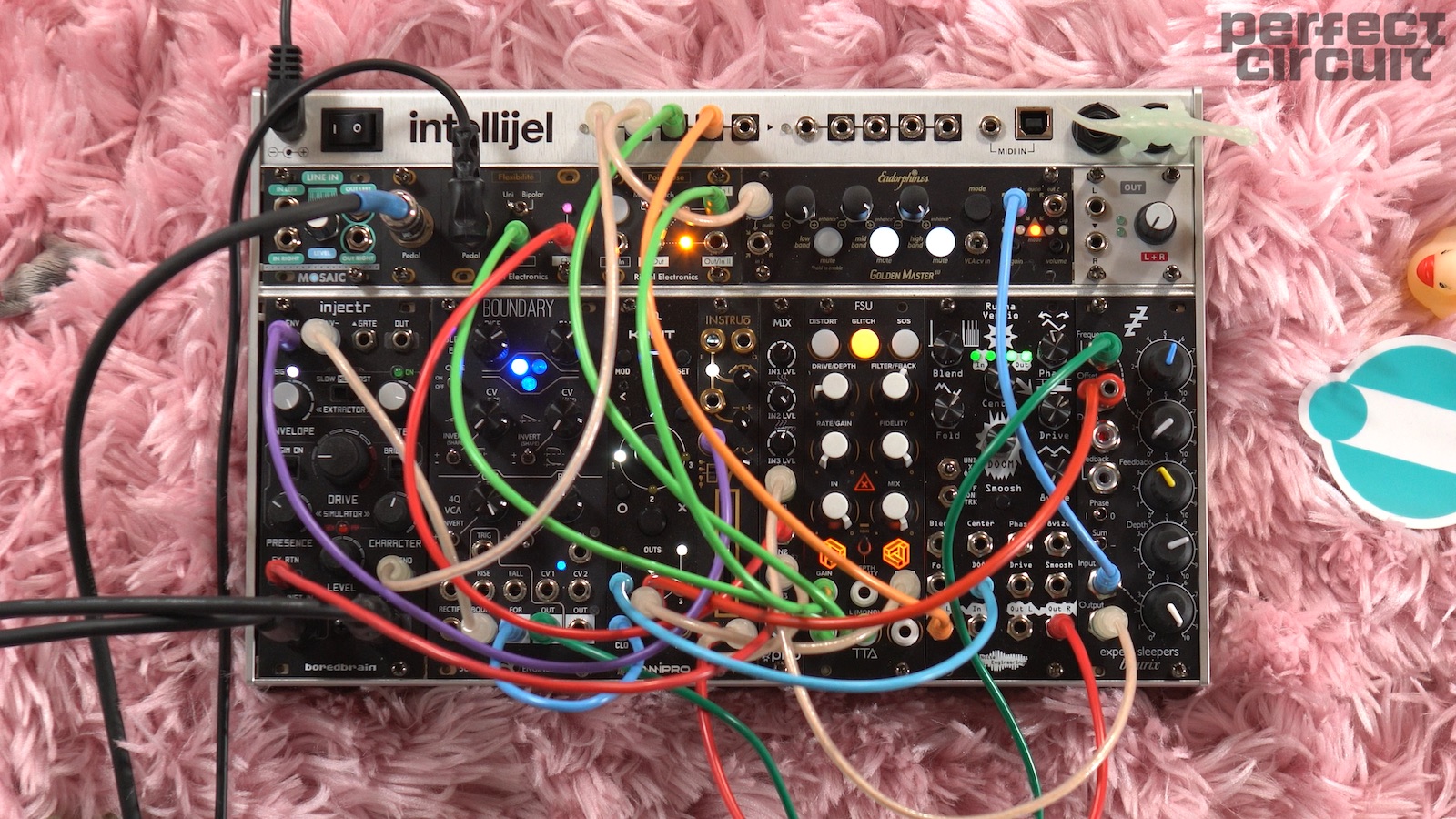
Modular synthesizers afford easy accessibility to control voltage signals, which are often abstracted away and simplified within pedals. For example, a phaser often utilizes a single, standard waveform for its modulation of the internal filters, such as sine or triangle wave. But with a Eurorack system, many different waveforms may be generated and combined together for complex movement, from ramp waves to sequencers, and even random voltages. Furthermore, one of the most powerful tools in a synthesizer is the envelope follower, a device which generates a control voltage following the amplitude of an audio signal. It's common to find these hidden within auto-wahs and other similar pedals, but on an open-ended modular synthesizer, that control signal may be routed anywhere on any effect, which makes it vastly more dynamic than what most pedals are capable of doing.
Without further ado, now that we have the considerations above in mind, let's take a look at what's in this 62hp powerhouse, and see what makes it come to life. Just like a pedalboard, there's an incredible number of options out there, and nearly infinite combinations of how they can be used together. This is just one particular configuration out of nearly endless possibilities.
Eurorack Modules for Effects
For this particular system, we're leaning upon four different modules to provide effects. Interestingly, most of them are digital effects processors, and two of them in particular are incredibly versatile and support several different modes or firmwares. This means that even in a system like this, which may appear fairly limited at a glance, we gain incredible mileage with only a handful of tools.
First, we have the new multi-effects module from Tiptop Audio: FSU. As its acronym of a name suggests, this module is designed to decimate, smear, and otherwise transform audio signals into an entirely new form. It offers three banks of eight effects: Distort, Glitch/Warp, and SOS, which is short for Sound on Sound. From the guitarist's perspective Distort should be fairly obvious in its function, and while there are some standard drive effects in there, some effects like the Frequency Shifters and Ring Modulators result in rather unusual sounds that may be new to some players. The second bank is full of several Glitch and Warp effects, from glitchy pitch shifting and chorusing to granular processing and synthesis, and provide one way for a guitar to become an instrument of texture. Finally, the Sound on Sound bank contains many of my personal favorite effects, which emulate endlessly overdubbing tape loops processed in a number of different ways, including an incredibly nice frozen plate reverb.
Next is Versio, the Noise Engineering module of many identities. In this video, we made use of three different firmwares: Imitor Versio, Ruina Versio, and Lacrima Versio, respectively offering multi-tap delays, over-the-top distortion and waveshaping, and auto-wah with chorusing and amp-like saturation. Unlike the FSU, this module operates in one mode at a time depending on the firmware which is currently loaded into the module. But updating the module is a straightforward process, and because every firmware is free, it's possible to buy any particular Versio and explore the many options until you find the one which resonates with you the most. Noise Engineering also provides alternative faceplates, so once you find "the one," it's easy to acquire a panel that accurately matches the function of the firmware.
For our third digital module, we chose the Golden Master from Endorphin.es, an EQ, multi-band compressor, and stereo image processor. This module was intended to be used as an end-of-chain effect in a Eurorack system with a number of simultaneous voices, similar to a bus compressor or mastering equipment. But it does have interesting applications in our relatively simple guitar processor system—I personally like to use it in a parallel signal chain to boost or carve away frequencies that are emphasized by another effect, especially on an otherwise "dry" guitar. Add in the compressors that are available to each of the three bands, and mid-side processing for stereo applications, and the Golden Master serves a vital role. Best of all, it's now available in both 1U and 3U form factors, so depending on the space available in your system, it can fit into a number of different places.
Finally, our last effect is also the sole analog member of the group, and it's the new Beatrix phaser by Expert Sleepers. What's interesting about this phaser compared to a lot of pedals of this effect type is that it contains no internal modulation signal. So provided you have other modules dedicated to generating control voltage, the contour of its phase-shifting is entirely determined by what is patched into it. LFOs, envelope generators, random voltages, sequencers, and envelope followers are all fair game.
Control Voltage Generators
This is a modular synthesizer after all, and it wouldn't be complete with compelling sources of control voltage. While we do have a few other signals which will be elaborated upon in the next section on Interfacing modules, the modules listed here are fully dedicated to crafting interesting contours to shape our audio signals.
First up is the Boundary from Schlappi Engineering, a cycling slew generator with a built-in four-quadrant VCA. Drawing from a rich lineage of function generators that includes the Dual Universal Slope Generator from the world of Serge synthesizers and the Make Noise Maths, Boundary is a module that may be patch programmed into different roles. It can be an LFO, envelope generator, slew limiter, envelope follower, or a number of other things, all depending upon which inputs and outputs are patched up. The four-quadrant or bipolar VCA is useful for morphing the polarity of signals, or even accomplishing ring-modulation.
Our other modulator is the Krait from Dnipro Modular, which provides three different channels of clockable modulation. Each channel may be set to function as a knob recorder, clocked LFO, or random voltage generator, thus offering a handful of helpful control voltage signals all at once. It does require a clock signal to function properly, and we have a few different ways to achieve this in our system. Perhaps the simplest and most reliable method for predictable behavior is to patch the EOR (end of rise) output from a cycling Boundary into the Krait, but using the Injectr's gate output or tapping a footswitch connected to the Pointeuse can lead to unstable, yet interesting ways to scan through modulations (more on these modules later).
Finally, while it isn't a control voltage generator itself, the vincâ from Instuō is indispensable for shaping, combining, and modulating CV signals. It's a highly compact dual VCA, with different capabilities for its top and bottom channels. At the top is another four-quadrant multiplier, with biasing and attenuverter controls for offsetting and inverting signals. The bottom is a standard VCA with variable response that moves from linear to exponential, meaning that the slope of control signals applied to it will shape things differently.
Routing and Interfacing Modules
Some might consider the basic utilities that handle routing and interfacing signals to be the most boring part of any effects processor, whether it be a pedalboard or Eurorack synthesizer. But the reality is that this can be the area that really affects how all the magic comes together and brings sounds to life. Here we'll talk about how we're getting guitar (or other instruments) into the system, as well as what we're using to incorporate external foot controllers.
We've truly fallen in love with the Boredbrain Injectr after it was released earlier this year, and it makes yet another return in this system. In a nutshell, it boosts instrument signals up to the amplitude levels required for effective processing within a Eurorack system, while also offering envelope followers and gate generators based upon the incoming signals. There's also an onboard amp and cab simulator, making it possible to use this system totally standalone without the somewhat boring sound of raw, direct electric guitar.
While we could accomplish all of our input and output needs with the Injectr alone, for the sake of more versatility, I've also added a Mosaic Line Input and Intellijel Stereo Line Output 1U. This opens up the door for stereo effects processing, or simply providing alternative means to enter and exit the system. For example, with a Loop Switcher, it could be possible to travel through the Injectr in one loop, and use another with the Line Input and Output modules, depending on the needs for your particular effects chain.
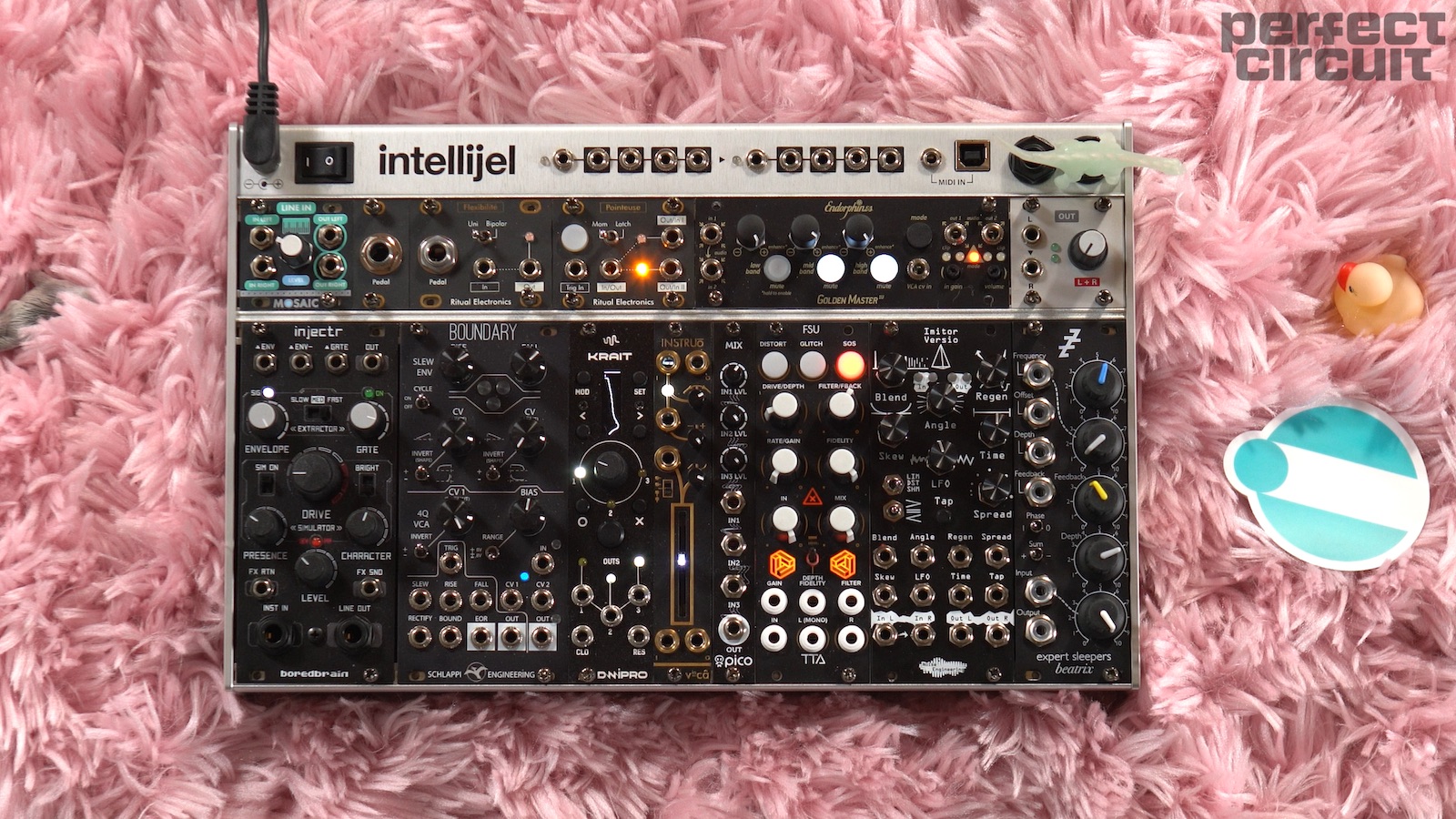
Before we wrap up the audio routing discussion, we should also mention the presence of an Erica Synths Pico Mixer, which handily affords three input channels to be combined together. Thanks to the Palette's built-in multiples, we can split a signal several times, and then sum it up with the Pico Mixer. For complex effects processing, this allows for clear, discernible playing among the wild effects that the Versios and FSU can create.
Finally, our last modules are the handy foot pedal interfaces from Ritual Electronics. The Pointeuse is for on/off style switches, supporting both momentary and latching modes. The neat thing about this module is that it also contains a bidirectional switch, meaning that one signal may be routed to two destinations, or switching between two different channels. To relate back to the traditional guitar world, this could be used to achieve clean and "dirty" tones like you might find on an amplifier. Personally, I found this module to be useful for providing foot control over the FSU's record feature in the SOS modes. There's also the Flexibilité, a handy expression pedal adapter. Useful as a dedicated voltage generator or to control the amplitude of a signal passing through it, this module makes it possible to put direct control under your hands…or rather, feet.
Putting It All Together
In practice, this system provides a number of ways to process external signals, usually from a guitar, but there's no reason this couldn't be useful with synths, drum machines, or as a patchable outboard effect used with a DAW. It also shines as a member of a larger pedalboard—thanks to its generous number of I/O channels, various sections of the system could be divided into a number of different subpatches, all interacting and affecting each other in various ways. And as always, this system represents just one approach to this concept. With an ever-expanding number of Eurorack modules out there, there are more options than ever to achieve any musical task.

